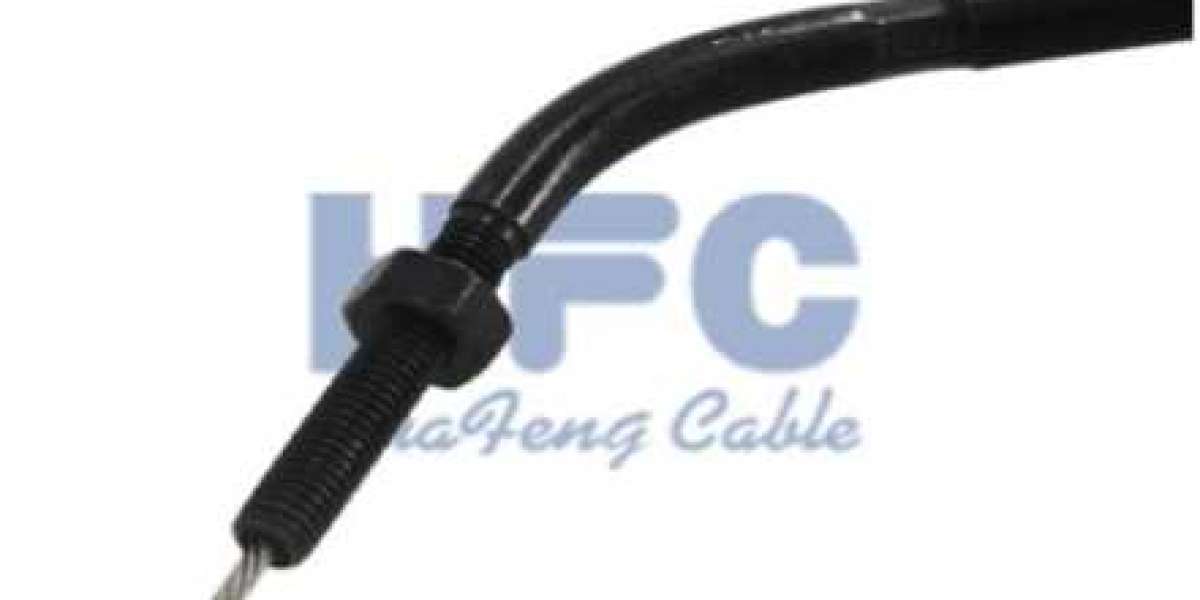The clutch cable is a crucial component of a motorcycle's clutch system, allowing riders to engage and disengage the engine power from the transmission. Over time, clutch cables can wear out due to regular use and exposure to various environmental factors. Recognizing the signs of a worn-out clutch cable is essential to prevent unexpected breakdowns and maintain optimal clutch performance. In this informative guide, we will explore the common signs that indicate a worn-out motorcycle clutch cable and discuss the necessary steps to address the issue.
I. Understanding the Motorcycle Clutch Cable
Before diving into the signs of a worn-out motorcycle clutch cable, let's briefly review its role in the clutch system. The clutch cable connects the clutch lever to the clutch release mechanism, which disengages and engages the clutch plates. When the clutch lever is pulled, the cable transmits the force, allowing for gear changes without stalling the engine. Releasing the lever re-engages the clutch, transferring power from the engine to the transmission.

II. Signs of a Worn-Out Motorcycle Clutch Cable
Difficulty Engaging or Disengaging the Clutch
One of the most common signs of a worn-out motorcycle clutch cable is difficulty in engaging or disengaging the clutch. You may notice resistance or a lack of smoothness when pulling or releasing the clutch lever. This can make shifting gears more challenging and lead to jerky or delayed clutch engagement. If you experience these issues, it is a clear indication that your clutch cable needs attention.
Increased Clutch Lever Play
Another sign of a worn-out motorcycle clutch cable is increased clutch lever play. Clutch lever play refers to the amount of movement or free play in the clutch lever before the cable starts to engage the clutch. As the clutch cable wears out, you may notice excessive play in the lever, where it moves too freely before any tension is applied to the cable. This can affect clutch engagement and result in inconsistent clutch operation.
Changes in Clutch Lever or Cable Tension
A worn-out clutch cable can cause changes in clutch lever or cable tension. You may notice that the clutch lever feels looser or tighter than usual, indicating an issue with the cable. In some cases, the cable tension may become inconsistent, leading to unpredictable clutch engagement or disengagement. If you observe any changes in clutch lever or cable tension, it's a sign that your clutch cable needs inspection.
Fraying or Damaged Cable
Physical damage to the clutch cable, such as fraying or kinks, is a clear indication of a worn-out cable. Regularly inspect the clutch cable for any signs of damage, paying close attention to the ends where the cable connects to the lever and clutch release mechanism. Fraying or kinks can compromise the cable's strength and reliability, eventually leading to complete failure if left unaddressed.
Sticky or Stiff Clutch Lever
A worn-out motorcycle clutch cable can also cause the clutch lever to become sticky or stiff. This occurs when the cable lacks proper lubrication or has accumulated dirt and debris over time. A sticky or stiff clutch lever can make it challenging to smoothly engage or disengage the clutch, resulting in a jerky ride or difficulty shifting gears. If you notice resistance or stiffness in the clutch lever, it's an indication that the cable needs attention.

III. Steps to Address a Worn-Out Motorcycle Clutch Cable
If you observe any of the signs mentioned above, it's crucial to address the issue promptly to prevent further damage and potential breakdowns. Here are the steps to take when dealing with a worn-out clutch cable:
Visual Inspection: Start by visually inspecting the motorcycle clutch cable for any signs of damage, such as fraying, kinks, or corrosion. Pay attention to both ends of the cable and the cable housing. If you notice any significant damage, it's recommended to replace the cable.
Lubrication: Apply a suitable lubricant specifically designed for motorcycle cables to ensure smooth cable movement. Lubrication helps reduce friction and prolongs the cable's lifespan. Be cautious not to use excessive amounts of lubricant that can attract dirt and debris.
Cable Adjustment: Check the cable tension and adjust it according to your motorcycle's specifications. Refer to your motorcycle's manual for specific instructions on adjusting the clutch cable tension. A well-adjusted cable ensures optimal clutch engagement and disengagement.
Cable Replacement: If the clutch cable is severely damaged or shows signs of extensive wear, it's best to replace it. Consult your motorcycle's manual or seek professional assistance to ensure proper installation.
IV. Preventive Maintenance for Clutch Cables
To extend the lifespan of your motorcycle clutch cable and minimize the chances of premature wear, consider implementing the following preventive maintenance practices:
Regular Inspection: Perform regular visual inspections of the clutch cable to catch any signs of wear or damage early on. Check the cable tensionand lubricate it periodically.
Lubrication: Apply a suitable lubricant specifically designed for motorcycle cables to ensure smooth cable movement. Lubrication reduces friction and helps prevent the cable from sticking or becoming stiff.
Avoid Excessive Force: Handle the clutch lever with care and avoid applying excessive force when engaging or disengaging the clutch. Excessive force can strain the cable and accelerate wear.
Proper Cable Routing: Ensure that the clutch cable is properly routed and secured to avoid unnecessary tension or stress on the cable. Improper routing can lead to premature wear and damage.
Regular Cable Replacement: Consider replacing the clutch cable at regular intervals, even if there are no visible signs of wear. Over time, cables can weaken and lose their integrity, leading to unexpected failures.

Conclusion
Recognizing the signs of a worn-out motorcycle clutch cable is crucial for maintaining optimal clutch performance and preventing unexpected breakdowns. Difficulty engaging or disengaging the clutch, increased clutch lever play, changes in clutch lever or cable tension, fraying or damaged cable, and a sticky or stiff clutch lever are common indicators of a worn-out cable. Promptly addressing these signs through visual inspection, lubrication, cable adjustment, or cable replacement can ensure a smooth and reliable clutch system. Implementing preventive maintenance practices, such as regular inspections and proper lubrication, can help extend the lifespan of your clutch cable. By staying vigilant and proactive, you can enjoy a safer and more enjoyable riding experience.
The Essential Guide to Motorcycle Clutch Cables: Everything You Need to Know








